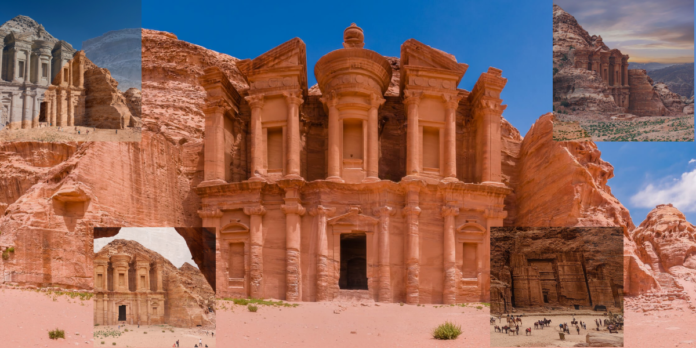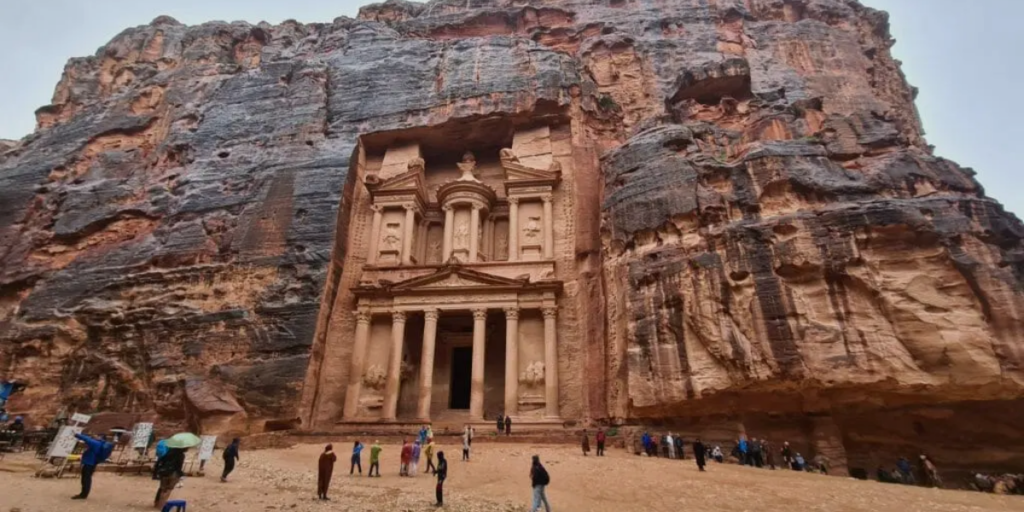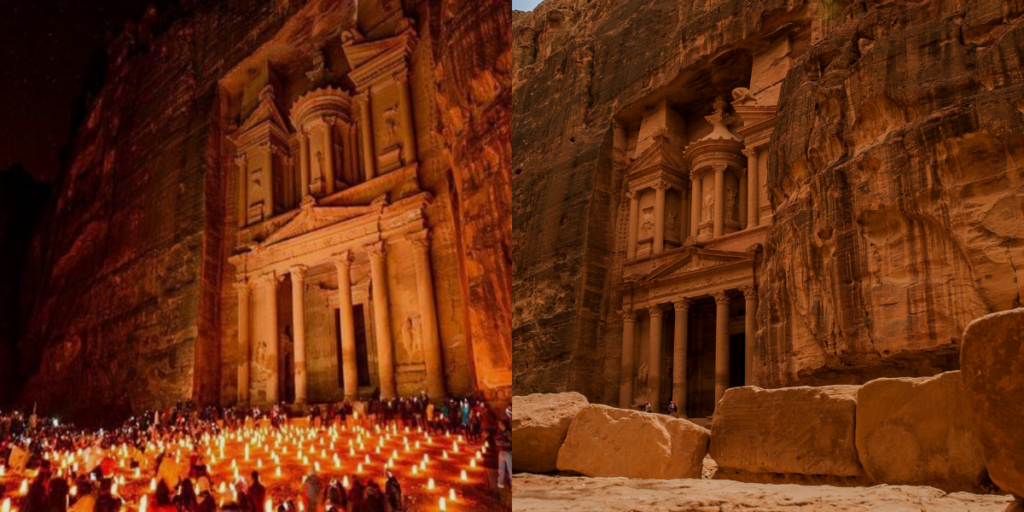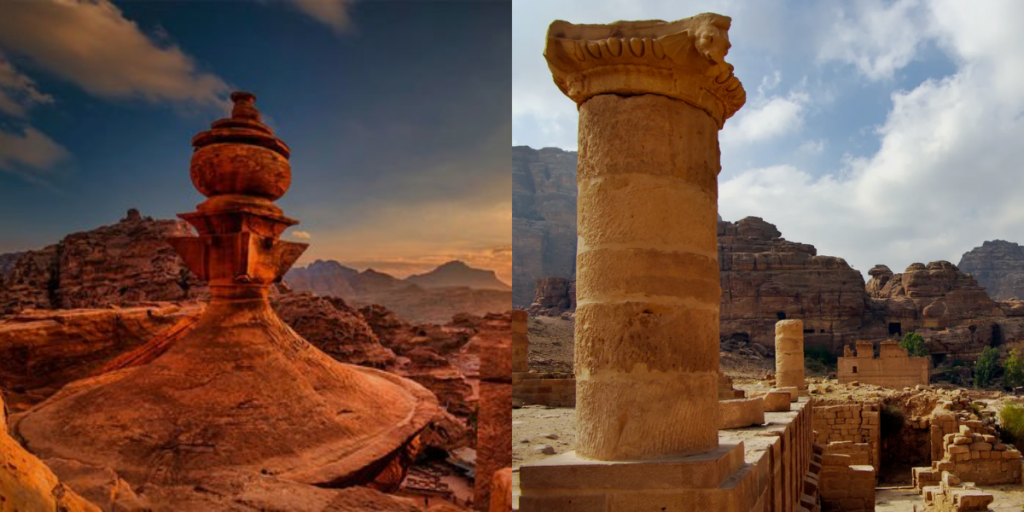Nestled in the rugged desert canyons and mountains of southern Jordan lies Petra, one of the world’s most famous archaeological sites. Known as the Rose-Red City due to the hue of the rock from which many of its structures are carved, Petra was once a thriving metropolis and a major trading hub. Today, it stands as a testament to the ingenuity and artistry of its ancient inhabitants, captivating the imagination of historians, archaeologists, and tourists alike.
A Historical Overview
Petra’s origins date back to around the 4th century BCE when the Nabataeans, a nomadic Arab tribe, established it as their capital. The Nabataeans were master builders and hydraulic engineers. They carved intricate tombs, temples, and buildings directly into the rose-colored sandstone cliffs, creating a city that was not only beautiful but also functional and defensible.
At its height, Petra was a bustling city, strategically located at the crossroads of several major trade routes. Goods such as spices, silk, and incense flowed through Petra, enriching its inhabitants and financing its elaborate architecture. The city’s prosperity continued until the Roman Empire annexed it in 106 CE, marking the beginning of its decline. By the Byzantine era, Petra had largely fallen into obscurity and was eventually abandoned. Known only to local Bedouins until its rediscovery by Swiss explorer Johann Ludwig Burckhardt in 1812.
Architectural Marvels
Petra is renowned for its unique blend of architectural styles, which reflect the diverse cultural influences absorbed by the Nabataeans. One of the most iconic structures is Al-Khazneh or the Treasury. Which is often the first sight that greets visitors after they pass through the narrow Siq Canyon? The Treasury’s grand façade, with its intricate Corinthian columns and Hellenistic design, is believed to have been a royal tomb.
Another significant site is the Monastery (Ad Deir), which, like the Treasury, is a massive rock-cut structure. Reached by climbing over 800 steps, the Monastery offers breathtaking views of the surrounding landscape and demonstrates the Nabataeans’ sophisticated engineering skills.
Petra also boasts extensive dams, cisterns, and water conduits. This hydraulic engineering allowed the city to flourish in an arid environment, supporting agriculture and a population that some estimates place at 20,000 to 30,000 people. The Nabataeans’ ability to control water resources was crucial to Petra’s prosperity and sustainability.
Cultural Significance
Petra’s importance extends beyond its architectural and engineering feats. It was a melting pot of cultures and religions, as evidenced by the variety of tombs, temples, and inscriptions found throughout the site. The city was home to Nabataeans, Romans, and Byzantines, each leaving their mark on its cultural landscape.
Religious life in Petra was diverse. Temples dedicated to Nabataean gods such as Dushara and Al-Uzza stood alongside shrines and churches built during the Roman and Byzantine periods. This confluence of religious practices illustrates the city’s role as a cultural crossroads.
Moreover, Petra’s art and inscriptions provide valuable insights into its inhabitants’ daily lives and beliefs. The city’s tombs, often decorated with intricate carvings and frescoes, reveal much about Nabataean social structures. Religious practices, and interactions with neighboring civilizations.
Modern-Day Petra
Since its rediscovery in the early 19th century, Petra has attracted explorers, historians, and tourists from around the world. Designated a UNESCO World Heritage Site in 1985, Petra is recognized for its outstanding universal value as a cultural property. In recent years, it has also been listed as one of the New Seven Wonders of the World, further cementing its status as a global icon.
Tourism is a major economic driver for Jordan, and Petra is its crown jewel. Each year, hundreds of thousands of visitors traverse the Siq to witness the breathtaking sight of the Treasury. Explore the ancient city’s ruins, and experience its unique atmosphere. The Jordanian government and various international organizations have undertaken efforts to preserve Petra’s delicate structures. Mitigate the impact of tourism, and ensure that this ancient wonder can be appreciated by future generations.
Despite these efforts, Petra faces significant challenges. The site’s soft sandstone is vulnerable to erosion, exacerbated by the foot traffic of millions of visitors. Additionally, while benefiting from tourism, the local Bedouin communities who live in and around Petra face the challenge of preserving their traditional way of life amidst rapid modernization and development.
Conclusion:
Petra is more than just an archaeological site; it is a symbol of human ingenuity. Cultural exchange, and the enduring legacy of a civilization long gone. Its rose-red walls whisper stories of ancient traders and skilled craftsmen. And a society that thrived in one of the harshest environments on Earth. As we marvel at Petra’s grandeur, we are reminded of the transience of human achievements and the importance of preserving our global heritage. In the heart of the Jordanian desert, Petra stands as a testament to the timeless allure of history. Beckoning us to explore its mysteries and appreciate the profound legacy of the Nabataeans.






